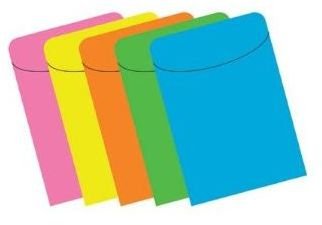Using Student Job Charts in the Classroom to Promote Student Responsibility, Belonging and Classroom Independence
Rationale for Creating Classroom Jobs
Using a classroom helper or job chart is an easy way to delegate tasks to students. Not only does this help get everything done in the classroom, it gives students a sense of responsibility and commitment to themselves and their classroom community. Job charts teach young learners to work hard and to take pride in what they do as well as make day-to-day activities in the classroom easier for the teacher. When used consistently and fairly, all students will mature through the process. Don’t use a job chart as a reward or punishment or to include or exclude a student. When selecting jobs, all students have an equal opportunity to participate.
DIY Job Charts
Purchasing a lot of ready-made materials is costly. You can easily make your own job chart to save money for other essentials. Make the chart original or handmade, and it will be just as cute as or cuter than the store bought.
For example, make a pair of jeans from blue construction paper and purchase library paper pockets. Write each student’s name on a craft stick and put the craft stick inside the pocket of the assigned job. Set up job descriptions for each job and make them known to the student. For an older class, write the job description on the pocket. For a younger class use magazine pictures showing a person doing the job. Print the name of the job on the pocket and glue the magazine picture to it.
Another idea is to make a poster into a familiar positive character that students recognize, such as Little Bill, or Clifford the Big Red Dog (as age appropriate).
Tape the chart at eye level on a bulletin board, wall or unused part of a blackboard.
The students will love that it is handmade and what they love, they respect.
Tips for Management and Success
-
Keep track. Use a rotating schedule so that each student has an equal chance of doing a job.
-
Be consistent and stick to the schedule. My students are well aware that Monday is the day we change jobs (they won’t let me forget!)
-
Think of jobs most important to you in the classroom. For example, some teachers use a computer helper, others do not. You do not have to set up jobs the way everyone else does; it’s your class.
-
Let the students know that if they do not do their helper job correctly and with respect, then they will lose the job.
-
Just as in a real job, reward students with a “job well done” award.
-
Teach students that it is OK to ask for help.
-
If you have a student who consistently struggles with completing the job as described, then just as in a real job, pull the student aside to discuss it. Issue a warning. If necessary, remove the student from the job for the week, but do not give the job to another student, do it yourself. The reason being, you do not want the other students to label the student as inept or “bad.” If the student wants to return to the job, then he or she must give you a rationale as to why. This is rarely necessary, but will promote a sense of duty inside the student.
-
Evaluate the need for a job. You may find that you no longer need a job, or need to add one, just communicate the changes to the students. Again, this makes them feel a sense of responsibility, because they are a part of the process.
Quotes for Kids on Jobs
Share these quotes with your kids and/or post them above the job chart:
“Discipline is the guardrail that keeps you on the path of self esteem.” ~Kent Nelson
“The reward of a thing well done is to have done it.” ~Ralph Waldo Emerson
Beginning teachers will benefit from following these classroom job tips. It is one less thing you have to worry about. For an example of how to promote responsibility in the circle time helper check out my article on circle time.
References
- Classroom experience of growing responsible kids is the motivation of this article by Laurie Patsalides.
- Image: Library Pockets, courtesy of amazon.com
This post is part of the series: Classroom Climate
Here are some articles about creating a positive classroom climate
